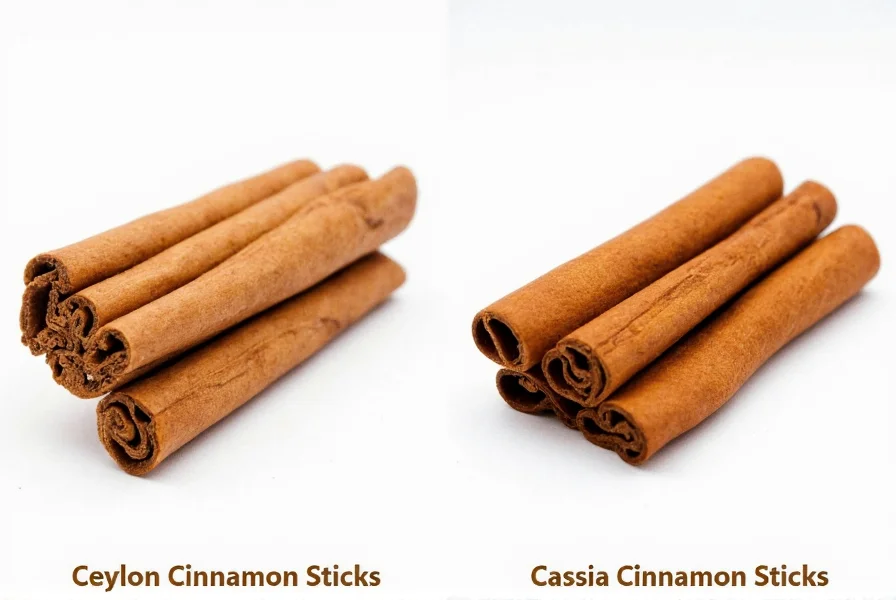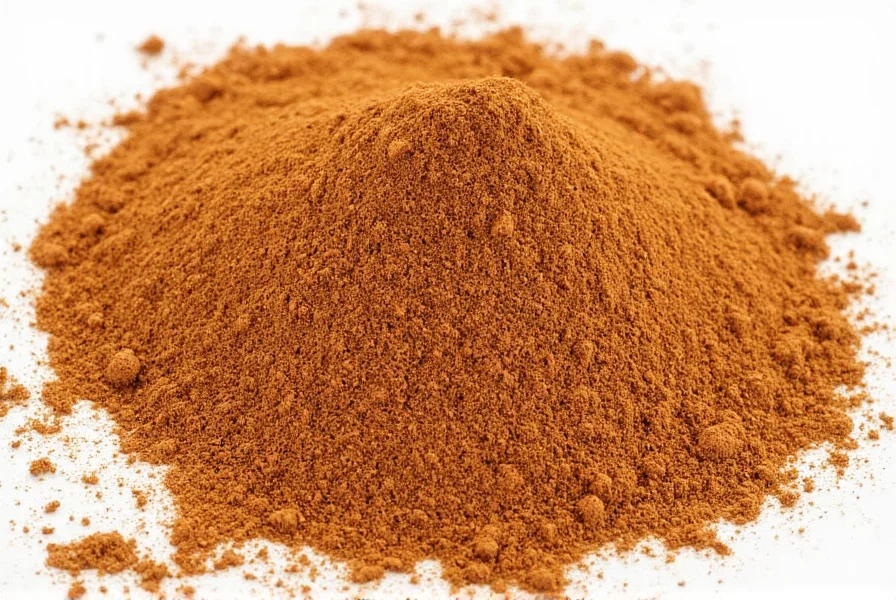True cinnamon (Ceylon cinnamon) can be purchased from specialty spice retailers, health food stores, select grocery chains with quality spice sections, and reputable online merchants. Look for "Cinnamomum verum" or "Ceylon cinnamon" on labels, as most "cinnamon" sold in supermarkets is actually cassia. Key retailers include Penzeys Spices, The Spice House, and Mountain Rose Herbs for verified authentic products.
When searching for where to buy true cinnamon, it's essential to understand you're likely seeking Ceylon cinnamon (Cinnamomum verum), not the more common cassia variety that dominates supermarket shelves. True cinnamon offers a more delicate flavor and significantly lower coumarin content than cassia, making it safer for regular consumption. This distinction matters for both culinary precision and health considerations, especially for those consuming cinnamon regularly or in therapeutic amounts.
Understanding True Cinnamon vs. Cassia
Many consumers don't realize that "cinnamon" in most grocery stores is actually cassia (Cinnamomum cassia), which has a stronger, more pungent flavor and contains up to 1% coumarin—a compound that can cause liver damage in sensitive individuals when consumed in large quantities over time. True cinnamon (Ceylon) contains only trace amounts of coumarin (0.004%), making it the preferred choice for daily use.
Visually, Ceylon cinnamon sticks form multiple thin layers that resemble a cigar roll, while cassia forms a single thick layer. Ceylon has a lighter brown color and more delicate, complex flavor profile with citrus notes, whereas cassia is darker, stronger, and more bitter.

Where to Buy Authentic Ceylon Cinnamon
Finding genuine Ceylon cinnamon requires knowing where to look and what to verify. Here are the most reliable purchasing options:
Specialty Spice Retailers
Brick-and-mortar specialty spice shops remain one of the best places to purchase true cinnamon. These retailers typically:
- Source directly from specific regions (Sri Lanka is the primary producer of Ceylon cinnamon)
- Provide detailed origin information
- Offer samples before purchase
- Maintain proper storage conditions to preserve freshness
Notable chains with multiple locations include Penzeys Spices and The Spice House, both of which clearly label Ceylon versus cassia varieties.
Health Food Stores
Higher-end health food stores often carry Ceylon cinnamon due to its lower coumarin content. Look for stores that:
- Specialize in organic or therapeutic-grade products
- Carry bulk spices with detailed labeling
- Employ knowledgeable staff who can verify sources
Whole Foods Market, for example, typically stocks Ceylon cinnamon in their bulk spice sections with clear labeling, though availability varies by location.
Online Retailers for True Cinnamon
When searching where to buy true cinnamon online, prioritize retailers that provide:
- Clear botanical identification (Cinnamomum verum)
- Origin information (Sri Lanka, Madagascar, or Seychelles)
- Harvest and packaging dates
- Third-party testing documentation
| Online Retailer | Product Verification | Price Range (per ounce) | Shipping Considerations |
|---|---|---|---|
| Mountain Rose Herbs | Organic certified, Sri Lankan origin | $2.50-$3.50 | US-based, reasonable shipping rates |
| Spice Jungle | Clearly labeled Ceylon variety | $1.75-$2.25 | Free shipping on orders over $50 |
| Amazon (select sellers) | Verify "Ceylon" in title and description | $1.25-$2.00 | Check seller ratings and reviews carefully |
When purchasing online, always check recent customer reviews specifically mentioning "Ceylon" verification. Be wary of products simply labeled "cinnamon" without botanical specificity.
How to Verify You're Getting Authentic Ceylon Cinnamon
Unfortunately, mislabeling is common in the spice industry. Use these verification methods when determining where to buy true cinnamon:
Label Inspection
Authentic products should include:
- "Ceylon cinnamon" or "Cinnamomum verum" (not just "cinnamon")
- Country of origin (Sri Lanka is primary producer)
- Harvest or packaging date (freshness matters)
- Organic certification if applicable
Physical Characteristics
Examine the product itself:
- Ceylon sticks should be thin, brittle, and form multiple concentric layers
- Color should be light tan to medium brown (cassia is darker reddish-brown)
- Aroma should be delicate and complex, not overpowering
- When broken, Ceylon should crumble easily (cassia is hard to break)

Price Considerations for True Cinnamon
Authentic Ceylon cinnamon typically costs 2-3 times more than cassia due to more labor-intensive harvesting methods and lower global production. Expect to pay $15-$25 for a 2-ounce container of quality Ceylon cinnamon, compared to $5-$10 for the same amount of cassia.
If you find "Ceylon cinnamon" priced similarly to standard cinnamon, it's likely mislabeled. The higher cost reflects the genuine article's production challenges—Ceylon cinnamon trees must be at least two years old before harvesting, and the inner bark is carefully peeled in thin layers by hand.
Storage Tips to Maintain Quality
Proper storage preserves the delicate flavor compounds in true cinnamon:
- Store in airtight glass containers away from light and heat
- Buy whole sticks and grind as needed (ground cinnamon loses potency in 6-12 months)
- Keep away from strong-smelling spices that can affect flavor
- For long-term storage, refrigeration can extend freshness
Why Sourcing Matters for True Cinnamon
The "where can I buy true cinnamon" question connects to larger issues of ethical sourcing and quality control. Sri Lanka produces about 80% of the world's Ceylon cinnamon, and supporting ethical producers ensures:
- Fair wages for harvesters who perform the delicate hand-peeling process
- Sustainable farming practices that preserve cinnamon forests
- Preservation of traditional harvesting methods
- Higher quality control throughout the supply chain
When researching where to purchase true cinnamon, look for companies that provide transparency about their supply chain and harvesting practices.
Frequently Asked Questions
How can I tell if I'm buying real Ceylon cinnamon?
Look for 'Cinnamomum verum' or 'Ceylon cinnamon' on the label, not just 'cinnamon.' Authentic Ceylon sticks are thin, brittle, and form multiple concentric layers. They have a lighter brown color and more delicate aroma than the thicker, single-layer cassia sticks. Price is also an indicator—genuine Ceylon typically costs 2-3 times more than cassia.
Is Ceylon cinnamon worth the higher price?
For regular consumption, yes. Ceylon cinnamon contains significantly less coumarin (a compound that can cause liver issues in large quantities) than cassia—only trace amounts (0.004%) versus up to 1% in cassia. If you use cinnamon daily in smoothies, coffee, or supplements, the health benefits of Ceylon make it worth the investment. For occasional baking where flavor intensity matters more, cassia may suffice.
Can I find true cinnamon in regular grocery stores?
Sometimes, but it's uncommon. Higher-end grocery chains like Whole Foods often carry Ceylon cinnamon in their bulk sections with proper labeling. Most standard supermarkets stock only cassia. If a product simply says 'cinnamon' without specifying 'Ceylon' or 'Cinnamomum verum,' it's almost certainly cassia. Specialty spice sections in larger stores may carry authentic Ceylon, but always verify the label carefully.
What's the best way to store true cinnamon to maintain freshness?
Store whole Ceylon cinnamon sticks in an airtight glass container away from light, heat, and moisture. Keep them away from strong-smelling spices that could affect flavor. Whole sticks maintain potency for 1-2 years, while ground cinnamon loses flavor within 6-12 months. For longest freshness, buy whole sticks and grind as needed. Refrigeration can extend shelf life for long-term storage.
Why is Sri Lanka the main source for true cinnamon?
Sri Lanka (formerly Ceylon) has ideal growing conditions for Cinnamomum verum, with its tropical climate and soil composition. The country has perfected traditional harvesting methods over centuries, where skilled workers hand-peel the delicate inner bark. While Ceylon cinnamon is also grown in Madagascar and the Seychelles, Sri Lanka produces about 80% of the world's supply and maintains strict quality standards through the Ceylon Cinnamon Institute, ensuring authenticity and quality control.











 浙公网安备
33010002000092号
浙公网安备
33010002000092号 浙B2-20120091-4
浙B2-20120091-4